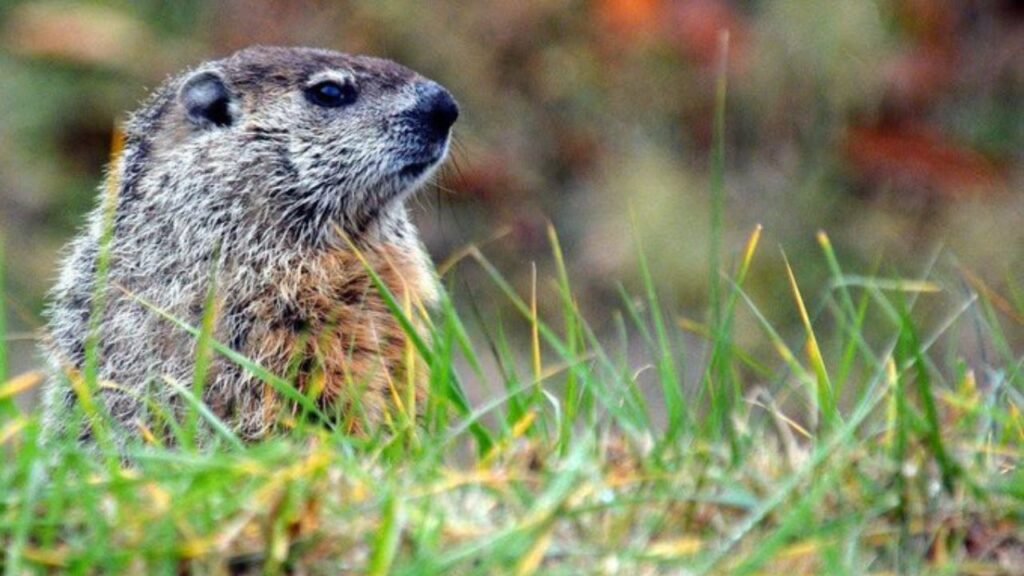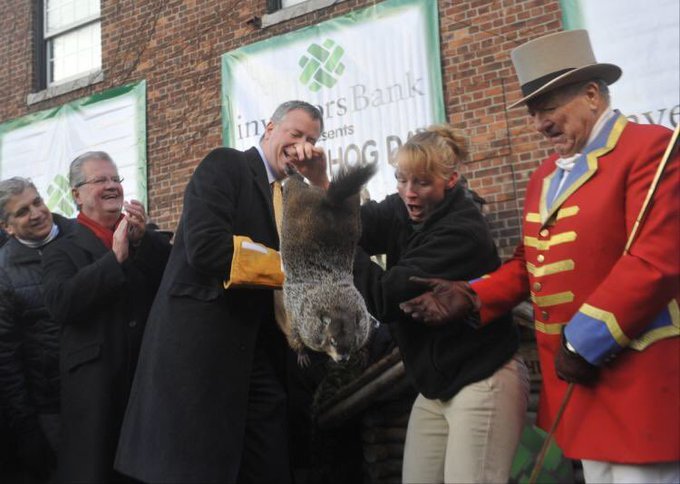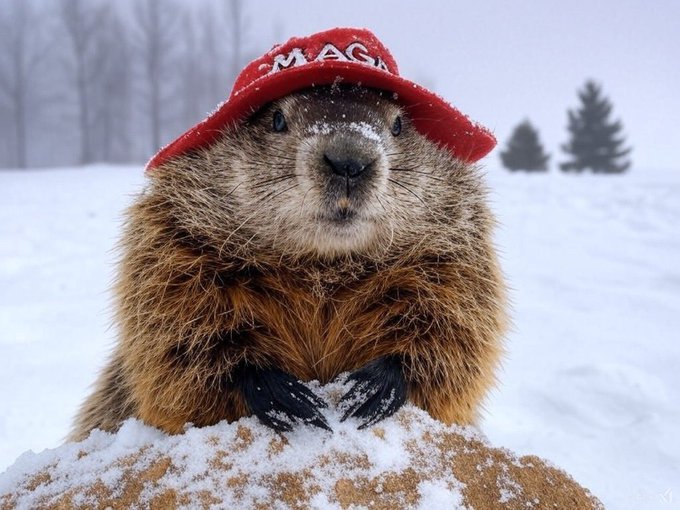Groundhog Day 2025: Phil’s Shadow And The Truth About Winter In A Warming World
- Leave a Comment
- James M
- February 3, 2025

The small Pennsylvanian hamlet of Punxsutawney is the focal point of a long-standing custom that combines weather forecasting with folklore every year on February 2. Punxsutawney Phil, the most well-known groundhog in the world, emerges from his burrow to make a winter prediction on Groundhog Day, an eccentric but cherished yearly spectacle that attracts thousands of spectators to Gobbler’s Knob. With Phil’s prediction making national headlines, this tradition—which has its roots in ancient European customs—has developed into a cultural phenomenon. His prognosis provokes conversations about the remaining weeks of winter, whether it is greeted with enthusiasm or doubt.
According to the folklore, Phil saw his shadow this year, which meant that winter would last for six more weeks. While no shadow would have suggested an early spring, a shadow, according to tradition, indicates colder temperatures and longer winter conditions. Many Americans are looking forward to warmer weather, thus the announcement was greeted with both applause and moans. However, Phil’s prediction is coming under more and more criticism from meteorologists and climate scientists due to the unpredictability of climatic patterns and recent record-breaking temperature changes.
Despite its enduring appeal, Groundhog Day is not so much a scientific approach to weather forecasting as it is a symbolic celebration. Although Phil’s shadow-based predictions have no real meteorological basis, his caretakers, who are Punxsutawney Groundhog Club members, insist that the furry forecaster has been making predictions for more than a century. Nevertheless, the festival continues to be a joyful and enjoyable way to break up the long winter months, uniting communities in a playful celebration of the changing of the seasons.
Many people question whether Phil’s 2025 projection, which predicts for a lengthier winter, will come to pass. Relying just on a groundhog’s shadow would not adequately convey the complexity of contemporary weather patterns, as climate change is causing certain regions to experience unexpectedly warm winters and others to experience extreme cold spells. Whether or not his prediction comes to pass, Groundhog Day is a beloved custom that serves as a reminder of the unpredictability of the seasons and the thrill of wondering what will happen next.

Groundhog Day Traditions
The origins of Groundhog Day can be found in weather legends from ancient Europe, specifically in the Christian holiday of Candlemas and the Celtic festival of Imbolc. Various folk beliefs predicted the arrival of spring depending on weather conditions, and these customs commemorated the halfway point between the winter solstice and the spring equinox. The groundhog, a burrowing rodent widespread in North America, was replaced by the native badger or hedgehog utilized in European mythology when German settlers introduced these traditions to Pennsylvania in the 18th and 19th centuries. This custom developed into what is today known as Groundhog Day over time.
Legend has it that a groundhog would retreat if it emerges from its hole on February 2nd and notices its shadow, indicating another six weeks of winter. The animal stays outside and predicts the early advent of spring if there is no shade. Despite lacking factual support, the myth has gained widespread recognition as a tradition that has captured the imagination of people both inside and outside of the United States. Even though meteorologists now use more sophisticated data models to produce precise long-term forecasts, the event is still a fun and superstitious way to “predict” the seasons.
Punxsutawney Since the late 1800s, Phil, the most well-known groundhog of all, has been at the heart of this custom. Since 1887, when Punxsutawney, Pennsylvania, held its first formal Groundhog Day celebration, Phil’s legacy has only gotten bigger. The Punxsutawney Groundhog Club claims that there is only one Phil, who is supposed to have been given exceptional longevity by a “secret elixir of life.” The groundhog has become a persistent emblem of this yearly event, attracting tourists and media attention from all over the world, even though this assertion is obviously mythological.
The Gobbler’s Knob ceremony has grown increasingly ornate over the years, with a formal top-hatted Inner Circle in charge of deciphering Phil’s “forecast” and communicating it to the audience. Numerous pop culture allusions have also been sparked by the occasion, most notably the 1993 movie Groundhog Day, which solidified the holiday’s status in popular culture. Tradition and legend can occasionally be equally as entertaining as science, as seen by the continued popularity of Punxsutawney Phil despite advancements in meteorology.
A groundhog named Punxsutawney Phil has predicted six more weeks of winter during the annual Groundhog Day event in Pennsylvaniahttps://t.co/fNEz6vPCfw
— Sky News (@SkyNews) February 2, 2025
📺 Sky 501, Virgin 602, Freeview 233 and YouTube pic.twitter.com/Gkw9EXnsKX
The Precision of Phil's Forecasts
Punxsutawney Despite being the most well-known weather-predicting groundhog, Phil has a dismal record. A straightforward coin flip would produce more accurate results because Phil’s forecasts have only been right roughly 35% of the time since 2005. Despite being a cherished custom, his shadow-based forecast has no actual meteorological basis. In spite of this, viewers nationwide still tune in every year to see if winter will last or if spring will come sooner.
There is a clear difference between contemporary weather science and folklore. Meteorologists forecast seasonal changes using satellite data, sophisticated climate models, and past weather patterns, while Phil depends on his shadow. Long-term forecasts from NOAA and the National Weather Service are based on quantifiable atmospheric trends rather than custom. Their models provide a far sharper image of the future than a groundhog’s fleeting sight of sunshine because they take into consideration variables like ocean temperatures, jet stream activity, and global climate trends.
One of the biggest flaws in Phil’s predictions is their lack of regional accuracy. A Pennsylvania groundhog’s prognosis cannot adequately reflect the environment of the entire United States due to the wide variations in the country’s climate. In the Southwest, where temperatures can be much milder, a winter that persists in the Northeast could not be the same. A one-size-fits-all groundhog prediction is significantly less accurate than scientific forecasting, which takes these geographical variances into consideration.
Phil continues to be a beloved figure in American society despite his poor accuracy percentage, demonstrating that tradition can occasionally be more about amusement than accuracy. Groundhog Day is a pleasant, nostalgic occasion even as meteorologists continue to improve their predictions using state-of-the-art equipment. Even though Phil’s forecasts aren’t always accurate, they offer a humorous diversion from the winter blues and serve as a reminder that life and the weather can both be erratic and full of surprises.
Punxsutawney Phil sees his shadow and predicts six more weeks of winter! #GroundhogDay pic.twitter.com/eevOY4XuIk
— The Weather Channel (@weatherchannel) February 2, 2025
Meteorologists are keeping a careful eye on how La Niña conditions affect weather patterns throughout the United States as February 2025 goes on. La Niña conditions are in place and are predicted to last from February to April 2025, according to the Climate Prediction Center’s most recent ENSO Diagnostic Discussion. From March to May 2025, ENSO-neutral conditions are forecast to take over.
Forecasts point to a propensity for above-normal temperatures in areas like the Rockies, the South, and the East. As the southern tier of the United States frequently experiences warmer and drier conditions during the winter, this projection is consistent with usual La Niña impacts. As the season goes on, residents in places like Denver, Houston, and Atlanta can experience milder weather.
On the other hand, below-normal temperatures are predicted for the Pacific Northwest and portions of the Midwest. The country’s northern tier, especially the Pacific Northwest and the Great Lakes region, is expected to have cooler and wetter weather, according to the National Oceanic and Atmospheric Administration (NOAA). This implies that regions like Chicago and Seattle may have higher precipitation, including snowfall, and colder temperatures.
It’s crucial to remember that although these forecasts offer a broad picture, a variety of factors might cause actual weather conditions to differ. Although meteorologists use sophisticated models and historical data to create these forecasts, there is always a chance that the forecast will not come to pass due to the inherent variability of weather systems. Following local weather advisories throughout the season will help you be ready for any last-minute adjustments.
A number of severe weather events have occurred around the United States during the winter of 2025, underscoring the season’s unpredictability. Record-breaking low temperatures have swept over the Eastern United States, causing major inconveniences and difficulties for locals. Local officials have issued advisories and warnings after cities like Philadelphia saw some of the lowest temperatures in decades.
In January 2025, a historic snowstorm occurred in the Gulf Coast, which is quite uncommon for this area. Widespread power outages and traffic difficulties resulted from the storm’s heavy snowfall and slippery conditions in places not used to such weather. In areas often characterized by milder winters, this exceptional occurrence highlights the growing unpredictability and intensity of winter weather patterns.
On the other hand, the winter in the Western United States has been exceptionally warm. Extremely high temperatures have been recorded in places like Phoenix, Las Vegas, and San Francisco, which has led to drought conditions and raised questions about water supplies. Local ecosystems have also been impacted by the ongoing warmth, as seen by earlier-than-normal plant blooms and changed mammal habits.
For several cities east of the Mississippi River, the 2025 winter has been among the coldest on record, according to the Southeast Regional Climate Center. The substantial regional differences in winter weather patterns and the difficulties they present to communities are highlighted by this data. The analysis conducted by the center offers important new information about the larger climate changes that are affecting these extreme weather occurrences.
The intricacies of climatic patterns and the value of readiness in the face of erratic weather are starkly brought home by these occurrences. Such extreme weather events may increase in frequency as climate change continues to affect atmospheric conditions, highlighting the necessity of adaptive solutions to lessen their effects.

With average temperatures rising more quickly than in other seasons, winter has emerged as the fastest-warming season in the US. For 76% of the 245 U.S. locales examined, winter is the season with the fastest rate of warming, according to Climate Central. From the Northeast to the Southeast, where winters are becoming noticeably warmer, this pattern is visible everywhere.
Global warming, which is changing seasonal weather patterns, is intimately related to the acceleration of winter warming. Seasons are changing in time and intensity as global temperatures rise. For example, growing seasons are becoming longer and precipitation patterns are changing as spring arrives earlier and fall lasts longer. Human activities, agriculture, and ecosystems that rely on regular seasonal cycles are all impacted by these shifts.
The rise in greenhouse gas emissions, especially carbon dioxide from the combustion of fossil fuels, is the main cause of these changes. Global warming results from these pollutants’ trapping of heat in the atmosphere. According to the U.S. Environmental Protection Agency, increasing global average temperatures are linked to a variety of altered weather patterns, such as an increase in the frequency and severity of extreme weather events. These consequences are made worse by our ongoing reliance on fossil fuels, which emphasizes how urgently we must switch to renewable energy sources.
Reducing greenhouse gas emissions holistically is necessary to address how climate change is affecting winter and seasonal rhythms. This entails developing regulations that support sustainable activities, improving energy efficiency, and embracing renewable energy technologies. We may contribute to climate pattern stabilization and the preservation of our seasons’ natural rhythms by reducing emissions.
Punxsutawney A beloved custom is Phil’s yearly Groundhog Day prediction, in which he predicts the coming of spring by determining whether he sees his shadow. However, this custom has grown more antiquated in light of current climate developments. Since 1969, Phil has been right about 36% of the time, which is a very poor accuracy rate. In a time when climate change is changing seasonal patterns, this sharp contrast emphasizes the drawbacks of using folklore to predict the weather.
On the other hand, meteorologists use sophisticated data analysis and advanced climate models to make more accurate predictions about seasonal weather. To produce forecasts, these models include a plethora of data, such as atmospheric conditions, ocean temperatures, and past weather trends. More precise forecasts are made possible by this scientific method, which helps with planning and readiness in a number of industries.
However, meteorologists face several difficulties as a result of the growing unpredictability of weather patterns brought on by climate change. Accurately forecasting weather patterns is becoming more challenging as a result of increased weather variability brought on by rising global temperatures. According to a Stanford University study, weather forecasts become less accurate as the atmosphere warms, pushing the boundaries of predictability.
In this regard, conventional approaches such as Phil’s prediction are not only scientifically incorrect, but they are also insufficient to handle the intricacies of contemporary climate dynamics. Even though they have cultural significance, modern meteorological science’s complex understanding cannot be replaced by them. The necessity for knowledgeable, science-based methods to comprehend and anticipate weather patterns is highlighted by the fact that the use of folklore for weather forecasting is becoming more and more unsustainable as climate change continues to develop.
Conclusion:
Even though Punxsutawney Phil’s yearly forecast still piques our interest, it’s crucial to understand that it’s more about tradition and enjoyment than it is about accurate weather predictions. For more than a century, the groundhog’s ability to see his shadow has been a part of American tradition, providing a humorous diversion from the winter blues. However, it is no longer feasible to anticipate the weather using such antiquated techniques given the quickly shifting climatic trends.
Accurate forecasting depends on an understanding of how our weather systems have changed due to the reality of climate change. Meteorologists give a far more accurate picture of what to expect in the upcoming seasons by employing climate models and cutting-edge technologies. We must adjust to the changing climate science landscape as global temperatures increase and weather patterns grow more unpredictable.
Nevertheless, there’s nothing wrong with taking pleasure in the lighthearted custom of Groundhog Day. It brings to mind the ancient customs that have bound us to the natural world and the passing of the seasons. We must, however, embrace these customs while simultaneously using more scientifically based methods of weather forecasting. By doing this, we may better comprehend and get ready for the difficulties that lie ahead and make sure that, in our ever-warming environment, we find a balance between enjoyment and realism.
